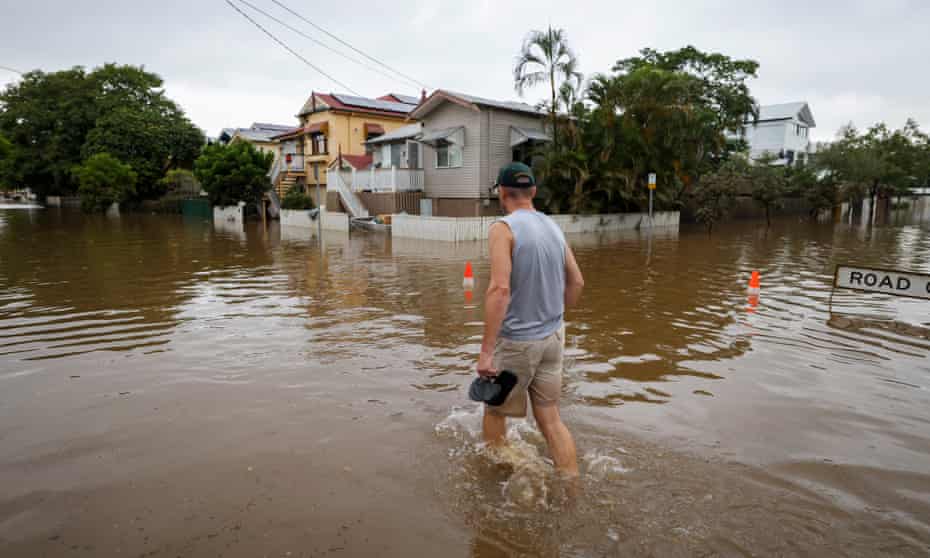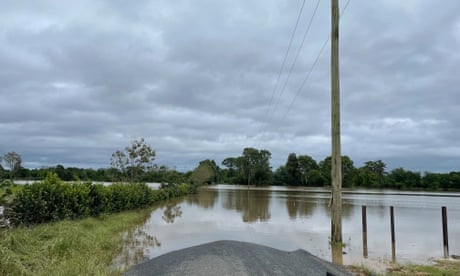Extract from The Guardian
NSW and Queensland floods 2022
It is so frustrating to see the same devastation play out again and again.

I’ve just got off the phone with a colleague in Queensland dealing with the floods.
I wonder how she will go as a disaster professional, being personally impacted by one herself?
I know when it happened to me, when a disaster happened where I live, and I was on the other side of the lights and sirens, I saw things in a whole new light, and it has reshaped the way I see things. And I see a hopeful way forward.
There are two conversations going on at the moment. There is the one the public and media are having about the rain and floods and the muddy devastation left in its wake. The rising water, the images, the stories, the heroic rescues. The loss and tears and pain and suffering. The messy mess. And who’s paying; who’s fault it is. Why the response is so slow.
Then there’s the other conversation that those of us who work in the disaster and emergency sector are having.
We feel frustrated watching this all unfold, again.
Some have spent our whole careers working in disasters and emergency management. For others, like me, it has only been 10 or so years, yet it feels as though we’ve been doing it all our lives.
Because it is such an all-consuming job, so emotional, heartfelt and intense. It’s hard to be amid devastation over and over again. In “peacetime” we plan, analyse, document, process, map, meet, talk and research, interview, postulate, future guess and navel gaze.

Trying to understand what happened and what we can put in place to minimise the loss and suffering, including policy, strategy, legislation, guidelines, community engagement, frameworks, models, exercises, communications, plans, lessons – not to mention the infrastructure and resources.
We want to share all we know and all we learn and make it better for people, and the planet, the next time it happens, so they don’t become major disasters, because we know they will happen again. And we know they will likely be worse the next time.
It is hard for me to see the same things unfold. The same conversations, the same frustrations, the same heartache, the same stories. The name of the street and the people being interviewed may be different, but the story, the pain, the experience, is pretty much the same.
Of course we can’t stop rivers flooding. We can’t stop the rain. But we can deal with them in a much better way.
Respond
better, faster. Be more prepared. Know our own responsibilities. When
to evacuate. What to protect. Who to listen to. What and how many
resources are needed. Where to put them. I thought we were getting the
public on board. That they were building awareness and getting their
plans in place.
But it is like groundhog day. The same thing
happens. Like a scary, well-rehearsed play. But we still aren’t ready
for what is coming despite the audience screaming out, “Watch out! It’s
behind you.”
What might we do differently, to better prepare
people and places, so people aren’t stuck on their roofs with water
rising around them, scared and cold, waiting to be rescued? How might we
prevent loss of life? The ecological destruction? The infrastructure
and property damage?
Rather than rush to put it all back together again as it was, if we can, let’s stop and think. Rather than rebuild it as it was in the past, we should look to the future and plan for a better outcome.
If we exchange knowledge with all the people who live and work in and treasure these places, and involve them in the planning and strategies, then surely betterdecisions can be made.
We need to stop having two conversations and have one.
So, before we rush to build it all back and get back to normal, let’s be smart, creative and brave, with not just our memories of what happened in the past to guide us, but what we know about how the future will look.
It’s not just individuals but governments and developers who need to rethink their plans and take into account these changing risks as they develop policies to “rebuild” on flood plains and in the bush.
We need to do this with communities, not do it to them.
We can’t keep putting the ambulance at the bottom of the cliff and picking up the pieces. Let’s get on top of the cliff and stop people falling.
No comments:
Post a Comment